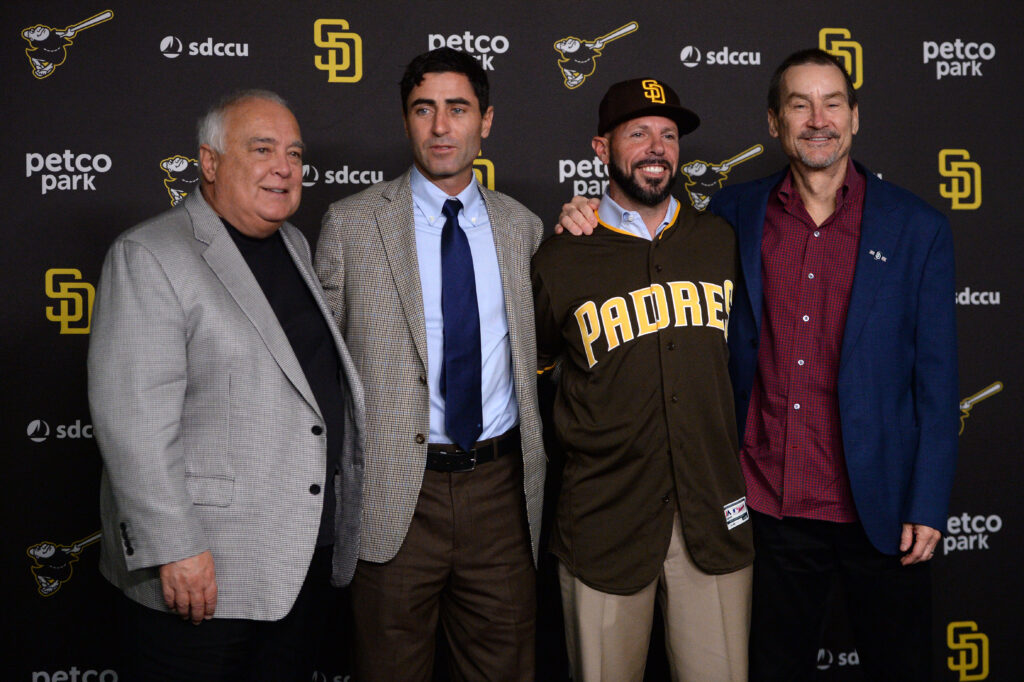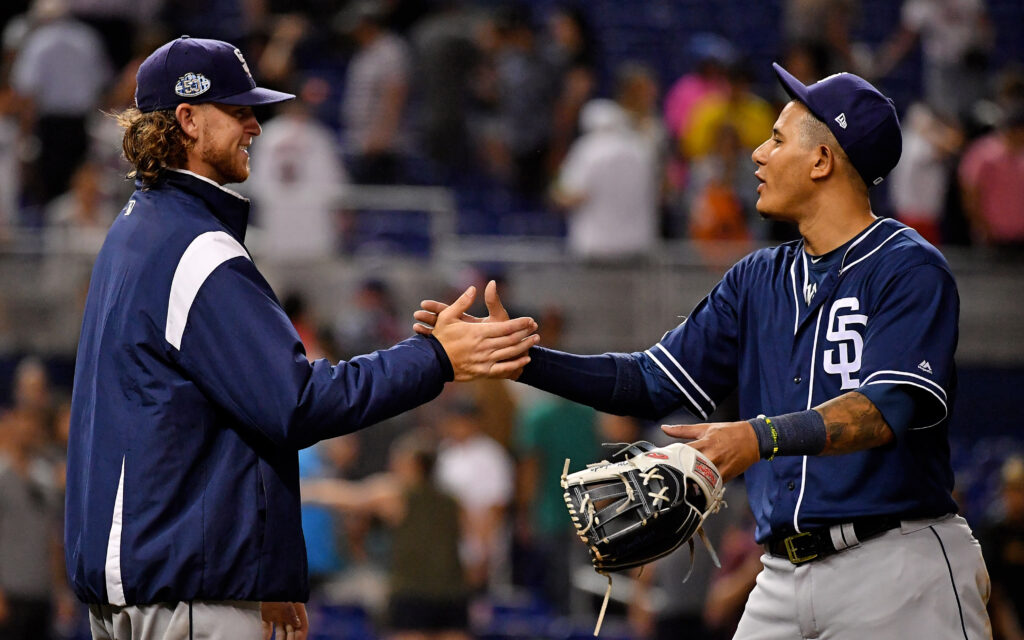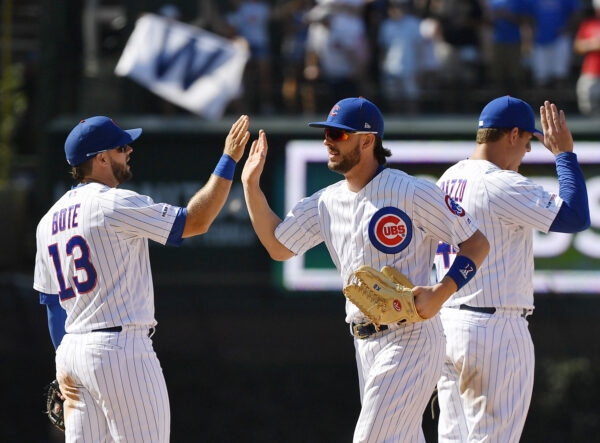Other rebuilding examples offer hope for the 2020 San Diego Padres

Mandatory Credit: Orlando Ramirez-USA TODAY Sports

How do the San Diego Padres stack up against successful rebuilds of the past?
There is more than one way to cook an egg. Not every baseball organization rebuild will, or has to, look the same.
However, it can help us imagine what the next step will be by taking a look back at other successful rebuilds and see where the Padres fit. 2020 is a significant season that can springboard the Friars to success and eventually, the playoffs and even a World Series title, or derail the current front office and perhaps force the hand of ownership into moving in a different direction.
It is fair to expect the 2020 Friars to be closer to .500 or even better.
Let’s take a look at past rebuilds, some of which became World Series champions, and see where there are some similarities with today’s Padres squad.
2012-2015 Kansas City Royals
First off, one player obviously in common in both scenarios is the first baseman, Eric Hosmer. He was a 22-year-old second-year player in 2012, fresh off of a season where he finished third in Rookie of the Year voting, exactly where the Padres’ most exciting young player, Fernando Tatis Jr., finished in 2019. In 2012, Hosmer regressed from his solid rookie season, and the Royals floundered to a 72-90 record, just two games better than where San Diego finished in 2019.
The 2013 Royals took a big step forward, much thanks to Hosmer’s .302 average, 3.5 WAR, and his first Gold Glove. They finished 86-76, just seven games short of the division champion Detroit Tigers and six games short of a Wild Card berth.
From there, it helped Kansas City reach new heights in the following two seasons, reaching the World Series in 2014 before losing in seven games to the San Francisco Giants. In 2015, they finally got over the hump and exorcised the demons of the previous year, winning the Fall Classic over the New York Mets, their second-ever title, and first since 1985.
Hosmer is not the only thing that is in common with the Royals of then and the Padres of now. The Royals developed a dominant closer in Greg Holland, who turned into an All-Star in 2013 for KC. Their bullpen from 2012 to 2013 went from good to straight-up dominant, second-best in all of baseball. Their back-end trio of Kelvin Herrera, Wade Davis and Holland was absolutely lethal.
The Padres have an All-Star closer of their own in Kirby Yates and have taken significant strides in turning their bullpen into what should be a top-five unit, lining up arms much like the great Royals squads did. Shortening games with a bolstered bullpen helped the Royals climb out of their rebuild, and it can do the same for San Diego.
That all started with a 14-win jump from 2012 to 2013.
Every single Padres fan would likely sign up for an 84-win season in 2020, with a similar increase.

2014-2016 Chicago Cubs
The Cubs finally broke their well-documented, century-long curse in 2016 with their first World Series title since before World War I.
Before all that, the Cubs dove deep into a rebuild that saw them lose 101 games in 2012. They got up to 73 wins in 2014. That season, they had a budding young shortstop prospect named Javier Baez. He was the ninth-best prospect in 2013 before he broke into the big leagues during that 73-win year in 2014.
Fernando Tatis Jr. certainly had a more riveting debut, as Baez posted a lowly 52 OPS+ with -1.0 WAR. However, the talent comparison is there. Seeing what Baez has become-a two-time All-Star, Silver Slugger Award winner, and NLCS MVP- gives fans a glimpse of what the future could hold for Tatis in the coming few seasons.
The Cubs reached a whopping 97 wins in 2015, despite Baez playing just 28 games all year. How did they do that?
First, they addressed the rotation. They went out and got Jake Arrieta during the 2013 season, and in 2015, he really hit his stride, winning the Cy Young thanks to a ridiculous 1.77 ERA in 33 starts. That wasn’t all. They acquired now five-time All-Star Jon Lester in 2015, who posted a 2.7 WAR.
Their starting rotation went from being ranked 24th in ERA in 2014 all the way up to third in 2015.
San Diego has not gone out and acquired a proven ace-like Lester or Arrieta, but that does not mean they have not improved their starting rotation.
Chris Paddack has a chance to become a true ace in 2020, after a stellar rookie season with a 2.6 WAR and 127 ERA+. It might be unrealistic to expect a Cy Young season, but he can become that anchor in the rotation that every playoff team needs.
Aside from Paddack, the Padres feel like Garrett Richards will be a de facto new addition to the club in 2020, after battling back from Tommy John surgery. He is very much an unknown commodity having not pitched more than 16 games in a year since 2015.
Dinelson Lamet is poised for a breakout season, now a full season removed from his own surgery. He showed flashes of stellar stuff last year, with three double-digit strikeout games.
[wpedon id=”49075″ align=”left”]
To seal the deal for the Cubs in 2016, they acquired the most dominant closer in the game at the time, Aroldis Chapman. The Friars already have that in Kirby Yates.
The Cubs also emphasized getting on base. They were ranked 28th in OBP in 2014, and that jumped up to 12th in 2015. Acquisitions like Dexter Fowler (lifetime .359 OBP) and Miguel Montero (.345), along with their dynamic duo of Anthony Rizzo and Kris Bryant, helped boost those numbers.
Tommy Pham is that player now for the Padres as he comes to San Diego, boasting a .373 OBP in his six-year career. That will aid a club that has been dead last in on-base percentage or close to it in the previous six seasons.
It is a pipe dream to think the Friars will go from 70 wins into the mid-to-high 90s as the Cubs did, but something in the middle is absolutely attainable.
PAGE 2 LINK BELOW
Native of Escondido, CA. Lived in San Diego area for 20 years. Padres fan since childhood (mid-90s). I have been writing since 2014. I currently live near Seattle, WA and am married to a Seattle sports girl. I wore #19 on my high school baseball team for Tony Gwynn. I am a stats and sports history nerd. I attended BYU on the Idaho campus. I also love Star Wars.